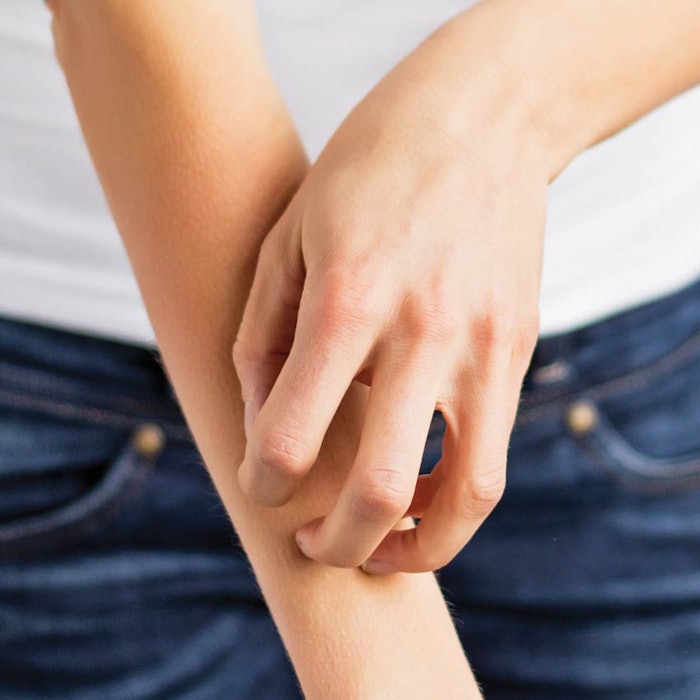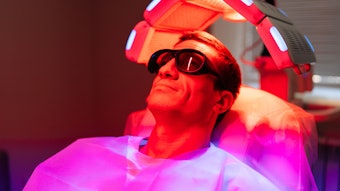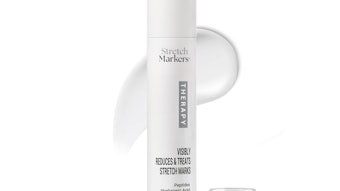
There are a lot of individuals claiming they have sensitive skin (SS) compared to two decades ago, and esthetic professionals and dermatologists are encountering an alarming rate of clients claiming this skin condition.
In a study conducted by the International Society of Dermatology, 44.6% of 994 participants claimed to have sensitive to very sensitive skin. These individuals had mainly dry or mixed skin, fair photo types, dermatological disorders and higher skin reactivity to cosmetics and various environmental factors compared to subjects who claimed slightly sensitive or non-sensitive skin. The study further concluded that the United States has a high prevalence for sensitive skin.1
Sensitive skin is no longer a symptom and has become accepted as a “condition.” Sensitive skin is defined clinically as abnormal stinging, burning, pain, pruritus and tingling sensations in response to multiple factors, which may be physical, chemical, psychological or hormonal (see Sensitive Skin Characteristics). Erythema is not considered a general characteristic, but may occur frequently.2
(Sub)Clinical Assessment
Skin assessment skills permit estheticians to determine a skin type and identify recognizable skin conditions such as SS. However, it is becoming apparent that a skin professional’s approach to skin analysis should adopt a science-based critical thinking mode. This goes beyond skin typing, to comprehend both clinical and sub-clinical characteristics of the skin.
Clinical presentations help estheticians identify what is visible to the naked eye. Sub-clinical presentations encompass factors that may affect the skin and its functionality but are not visually perceptible. These sub-clinical factors are often internal and include: general state of health, nutrient deficiencies, medications and disease. Inflammation remains a key factor in the development of skin sensitivity. It highlights the presence of chronic conditions within the human body and helps the esthetician recommend products and lifestyle alterations for home care.
A thought-provoking article noted, “Once you’ve seen a dermatologist and have ruled out serious problems, most skin trouble, it turns out, is of our own doing.”3
Indeed, some of the traits connected to skin sensitivity frequently find origin in over-processing, be it chemical peeling, exfoliation or home care product application. These factors additionally pre-dispose skin to acute sensitivities, especially to known sensitizing agents and fragrances.
The continual exposure to irritants and agents that disorient skin’s acid mantle, natural lipids and water content will increase vulnerability to sensitivity. Many individuals are susceptible to at least one common ingredient in skin care or cosmetic products, and the potential for irritation and sensitivity increases with those individuals with an impaired stratum corneum.
Many estheticians support the rationale of sustained functionality of the skin adapted from holistic medical philosophy, which endorses a “do no harm” approach. This concept relies on the selection of products and techniques in skin care that mirror the natural functioning of the skin. It is important to recognize that the resulting physiological behavior of the skin when internally or externally assaulted, presents the skin as a living organ of the body. It is therefore reactive and responsive by all accounts.
Build A Better Defense
One of the key factors in skin sensitivity is the physiology of the stratum corneum and the intricacies of TEWL and lipids. Additional contributing factors involve the skin’s immune system (SIS), medications, health and the confirmation of classic sensitive skin conditions such as rosacea and eczema.
Corneotherapy is the scientific validation of the skin’s integrity and its correlation with internal and external lipids. It endorses optimizing immune function and supporting barrier defense systems to aid in reducing structural inflammation.4 It is well understood that the skin is continually subjected to both chemical and environmental assault, and it must be able to withstand these factors to act as the defense mechanism. Additionally, the skin provides metabolic function, sensation and has the innate responsibility to repair itself, as it is “impermeable but not impenetrable.”5
It has often been said that exfoliation of the epidermis increases cell turnover. However, exfoliation may only be beneficial to a specific level, at which point it becomes harmful to the skin. It would be beneficial to sub-clinically determine the degree of possible trauma that exfoliation may impact the SIS and sensory aspects that may induce skin sensitivity. The immune system may be reacting with the dermis to forcibly initiate damage repair that may be sustained. There may be a prospect of nutrient diversion and weakened repair mechanisms that would normally be readily available for the skin to maintain its normal functioning and repair. These are factors that must be given great consideration when performing a chemical peel or exfoliating service.
Identification of skin sensitivity in the treatment room and inquiring about a client’s skin care regime are both qualifiable and quantative. A common thread contributing to the alarming increase in skin sensitivity is the mindset of “instant gratification” through the overuse of products or treatments that likely lead to the sensitivity syndrome or worse. Unquestionably, estheticians are often shielded from clients unwilling to share information regarding self-treatment and what they may deem as a “better or faster” way to obtain results on their own accord by a friend’s advice, or experimentation beyond professional recommendations.
Seeing Red
Psoriasis, eczema, contact dermatitis and rosacea are invariably associated with SS. Generalized erythema, episodic flushing, papules and the hallmark telangiectasia are classic symptoms of rosacea. Topical rosacea products, medications and treatments promote the use of anti-inflammatory ingredients to decrease the dilation of the blood vessels (nitric oxide) and reduce factors that may trigger or aggravate symptoms. The goal of rosacea therapy is to reduce erythema and vascular reactivity, neutralize free radicals or reactive oxygen species (ROS), inhibit immune function, and address other sub-clinical mediated cellular functions. Inflammation is but one portion of the rosacea syndrome, as localized irritation propels vasodilation, erythema, reduced oxygen consumption, hypoxia (loss of oxygen) and if prolonged—neovascularization and fibrosis.6 Avoidance of specific modalities, treatments and ingredients is paramount in reducing the appearance and inflammatory presentations of rosacea.
“There is no logical reason why adding inflammation could make our skin younger or healthier. Even research on the body’s ability to repair itself, it almost universally has shown us that it never recovers 100% (and it certainly does not recover 110%) when damaged,” explained Ben Johnson, M.D.7
Feeling the Sting?
The stinging sensation felt with SS can be explained as a reaction to a proportion of neurons (nerves) responding to stimuli. Triggers such as chemicals and pollutants stimulate receptors that releases neuropeptides to trigger the inflammatory response. Histologically, neuropeptides engage in the process of tissue repair, but equally are active in triggering sensitization in conditions such as hives, rosacea, psoriasis and atopic dermatitis. Neurogenic sensitivity may also be experienced in reaction to various triggers that are sustained from chronic exposure.
The reactivity of transient receptor potential (TRP) channels in the skin are responsive to multiple factors that may be physical and/or chemical.8 TRP channels are molecules with specific functions in the skin that feature “cation channels” and are expressed by various cell types: sebocytes, keratinocytes, sensory neurons and hair follicle cells. Their activation is shown to induce heat sensation and the development of skin-derived pruritus, and may suppress sebaceous lipid synthesis. Additionally, activation of TRPV1 and TRPV3 channels either on epidermal or hair follicle-derived keratinocytes results in increased cytokine release, as well as the generation of free radicals, and pro inflammatory molecules.9
Immunogenic inflammation is mediated by the immune system in the same way the body would defend against a virus. The reactions may include sensitization, pain, redness and swelling. Chronic stress, malnutrition, medication, dehydration, and illness also contribute to the responsiveness of SS.
Closing
The management of sensitive skin is well within reach of the esthetician. By identifying triggers of skin sensitivity, an appropriate treatment can be devised. An array of ingredient technologies (see Ingredients for Sensitive Skin) are available to treat sensitive skin, both in professional treatments and in at-home skin care.
Education plays the key role in engaging clients in the prevention of SS and maintaining skin health—evaluate, involve and evolve.
REFERENCES
- www.ncbi.nlm.nih.gov/pubmed/21781068
- www.medscape.com/viewarticle/814679
- www.webmd.com/beauty/face/the-sensitive-skin-myth
- https://corneotherapy.org/corneotherapy/what-is-corneotherapy
- www.corneotherapy.org/articles/article-library/119-the-epidemic-of-over-exfoliation
- https://raypeat.com/articles/articles/rosacea-inflammation-aging.shtml
- www.facebook.com/notes/integrity-skin-care-wellness/why-peels-age-your-skin/605542929488577
- https://www.nature.com/articles/nrd3456
- www.medscape.com/viewarticle/814679
- www.amazon.com/Skin-Ingredient-Handbook-Revised-Expanded/dp/1937235548/ref=dp_ob_title_bk
(Websites accessed May 12, 2015)











